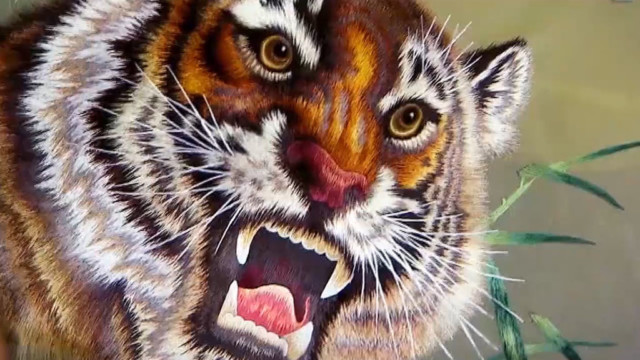Embroidery is a unique art form in China. It has a proud history in the country. And, its styles vary across regions.
CGTN’s Frances Kuo explains.
Embroidery in China can be divided into four distinct styles — each originating from a different region. The first is Su embroidery – originating in the city of Suzhou in the province of Jiangsu.
This style is known for its intricate images using very fine thread. Another stand-out trait: the embroidery can be double-sided, meaning the same image can be viewed on the front and back.
A second style started in Hunan Province some 23-hundred years ago. It’s called Xiang embroidery with pieces are done on transparent chiffon silk.
They involve loose stitches, using more than a dozen shades for each color. This helps create contrasts between shadow and light, contributing to a 3-D effect. The most common designs are lions and tigers.
Further south in Guangdong Province is where we find the Yue embroidery style. Colors are also rich and bright. The kinds of threads used are unique including gold, peacock feathers and hair from the tail of a horse. Popular designs are birds, dragons and phoenixes.
Our last stop is Sichuan Province where we find Shu embroidery. It’s known for the closeness of its stitching, allowing for intricate detailing.
Threads in this genre are made of satin and colored silk.
Typical designs include pandas, birds, flowers and landscapes.
They’re often featured not only as artwork displays but also as quilt and pillow covers and tablecloths.
Combined, all four styles represent traditional embroidery in China with a rich history dating back thousands of years.
Grace Lai discusses China’s unique and historic embroidery styles
Embroidery has a proud history in China, and its styles are as varied as the provinces in which they originate. Grace Lai, applied arts curator at the Auckland Museum, discusses with CGTN’s Elaine Reyes.
 CGTN America
CGTN America

